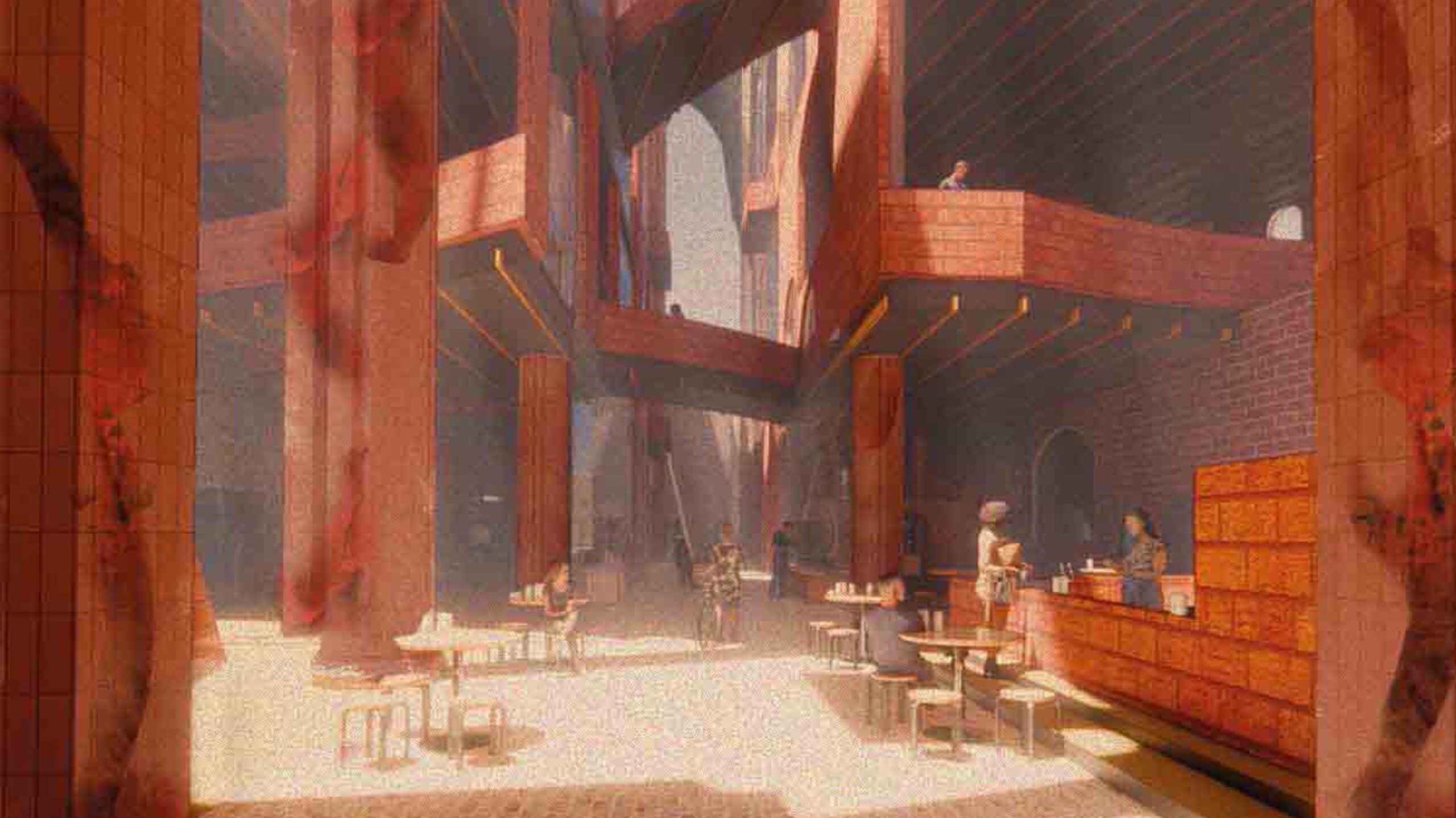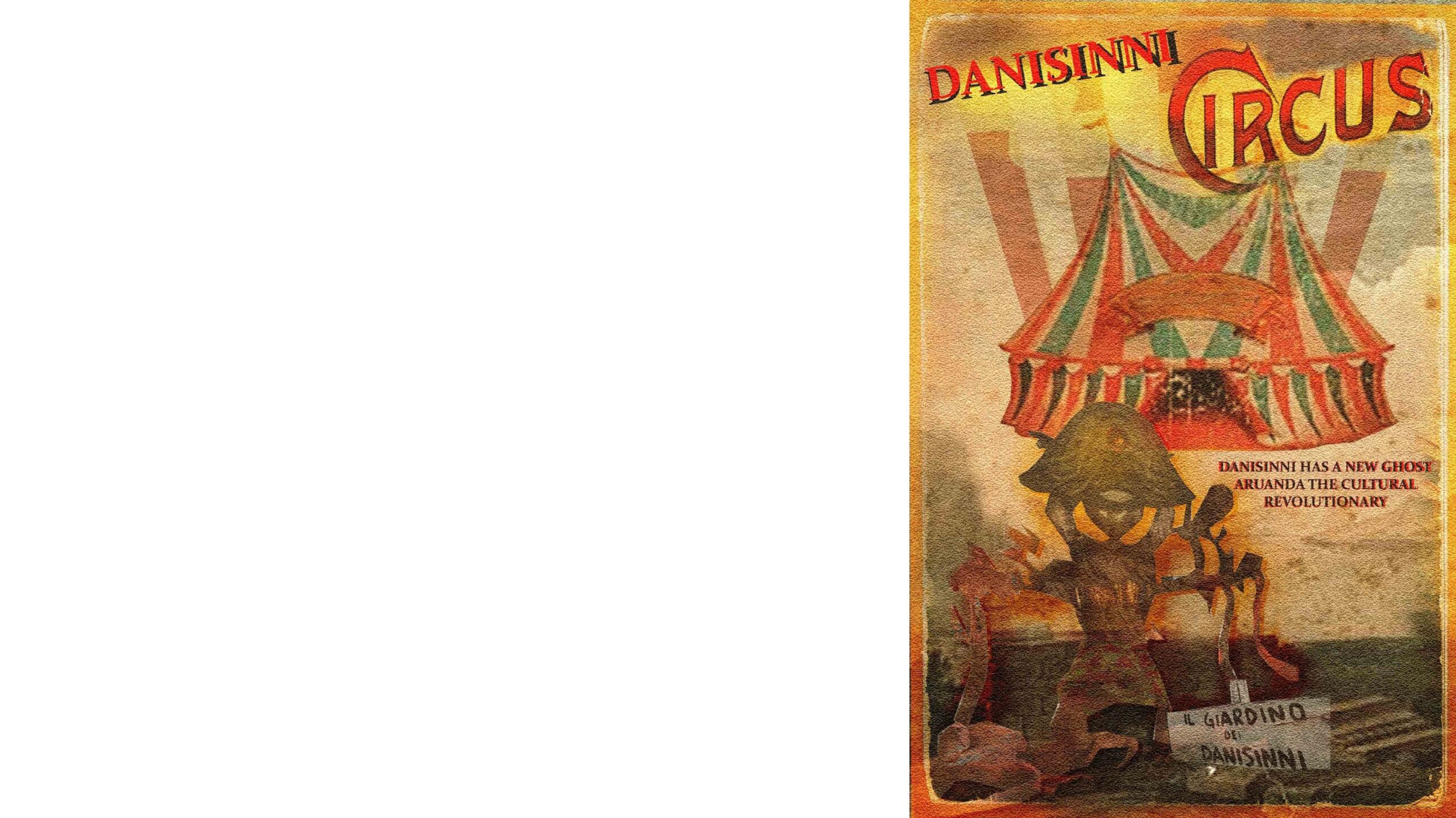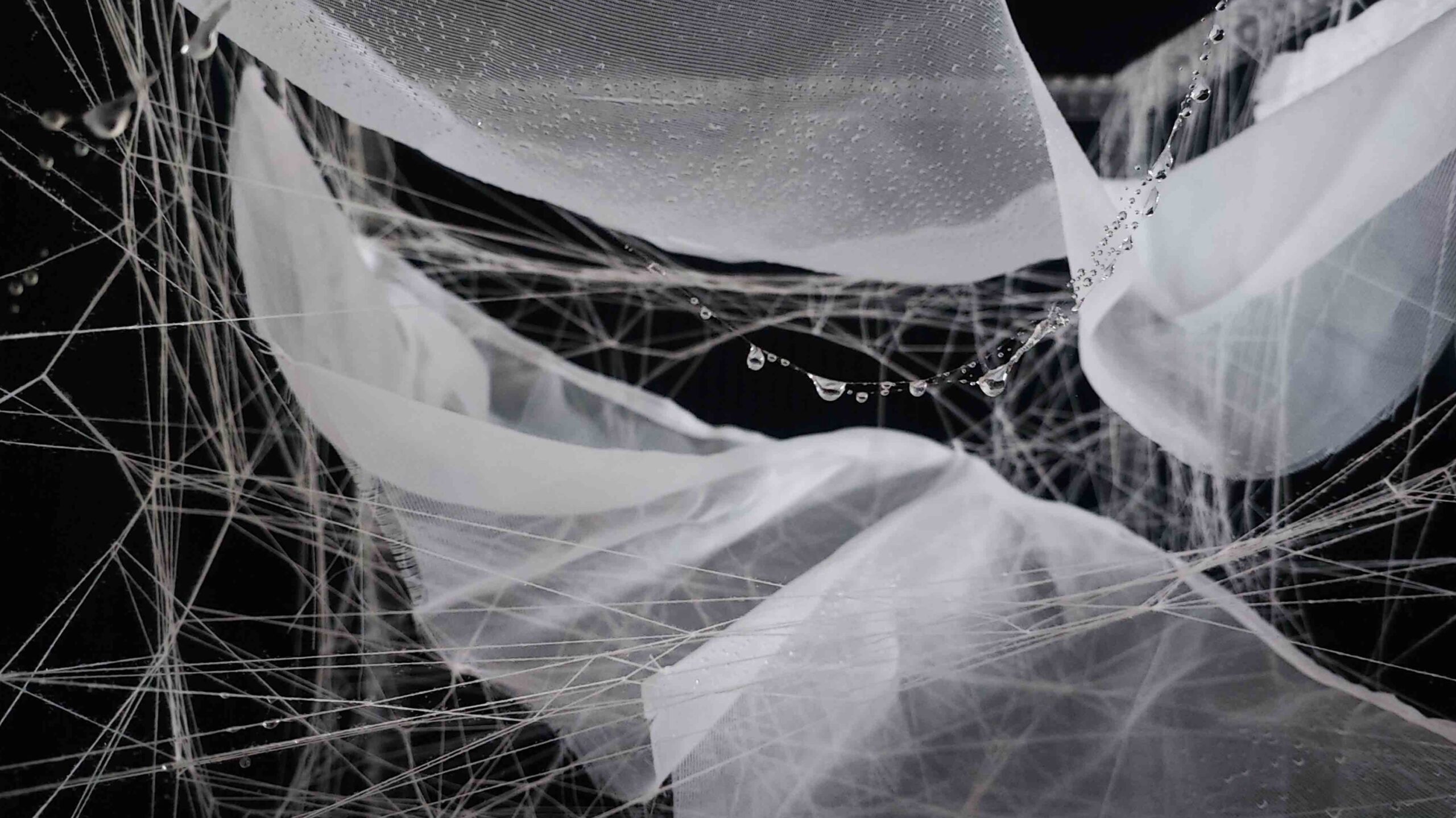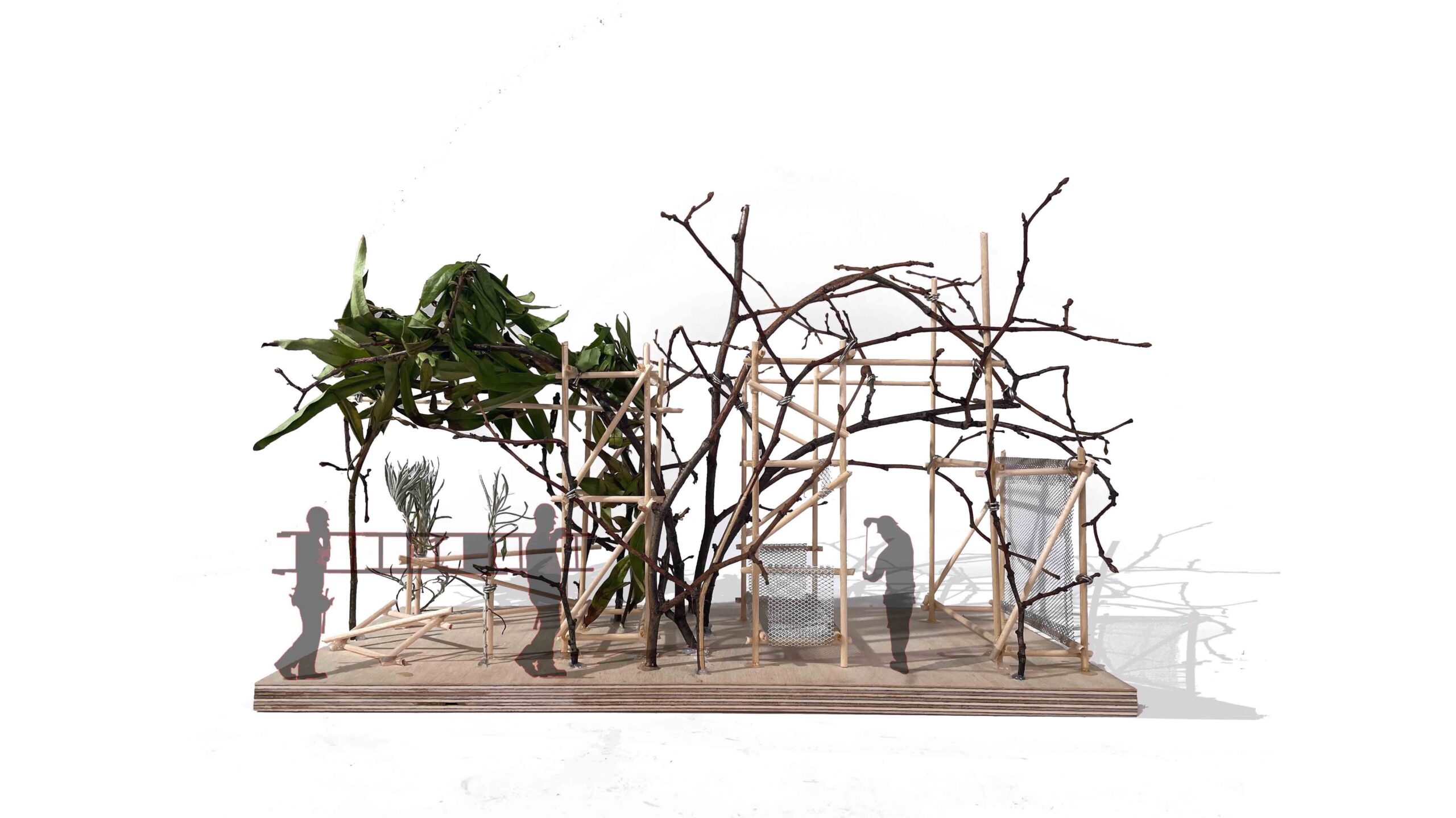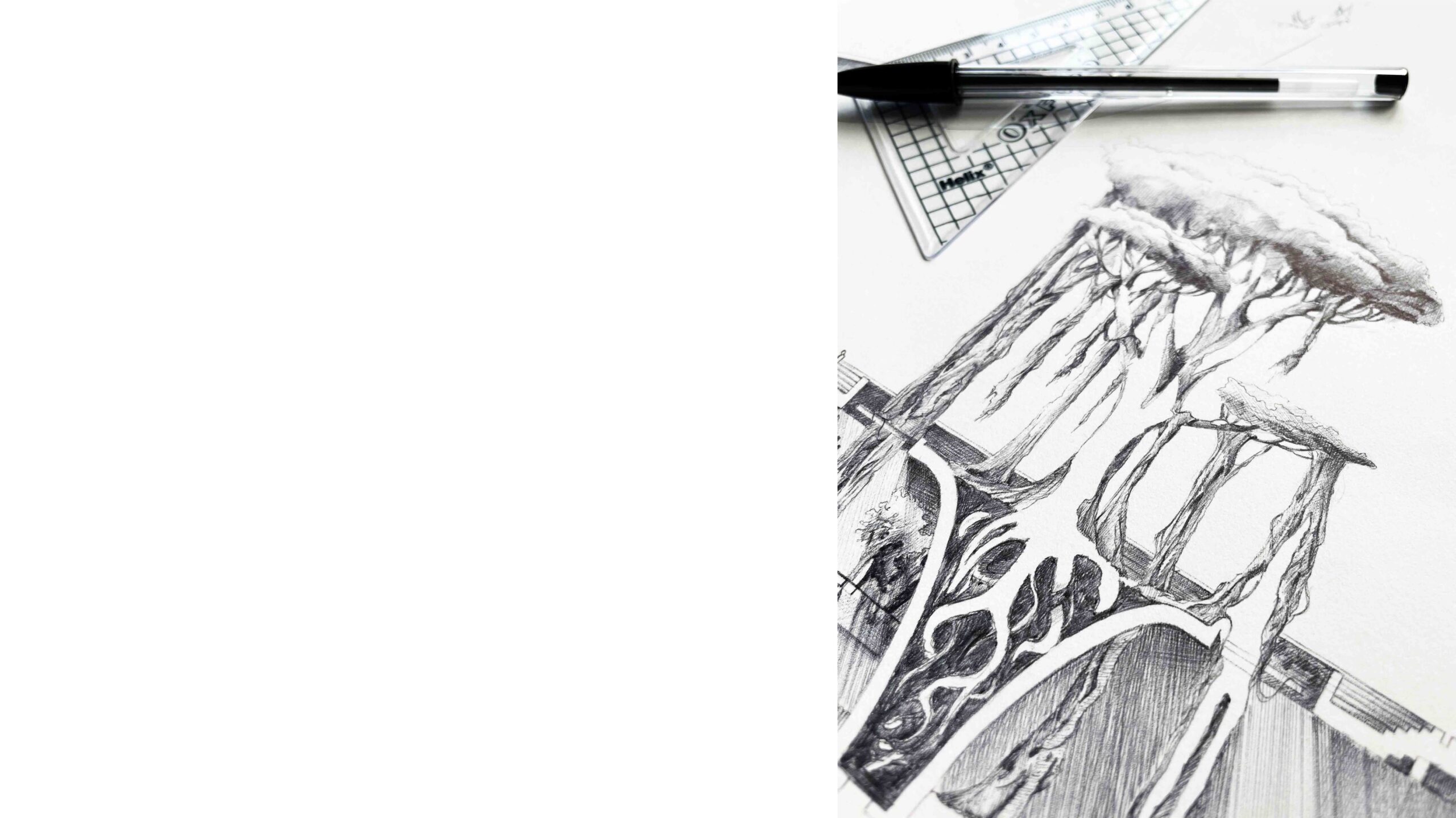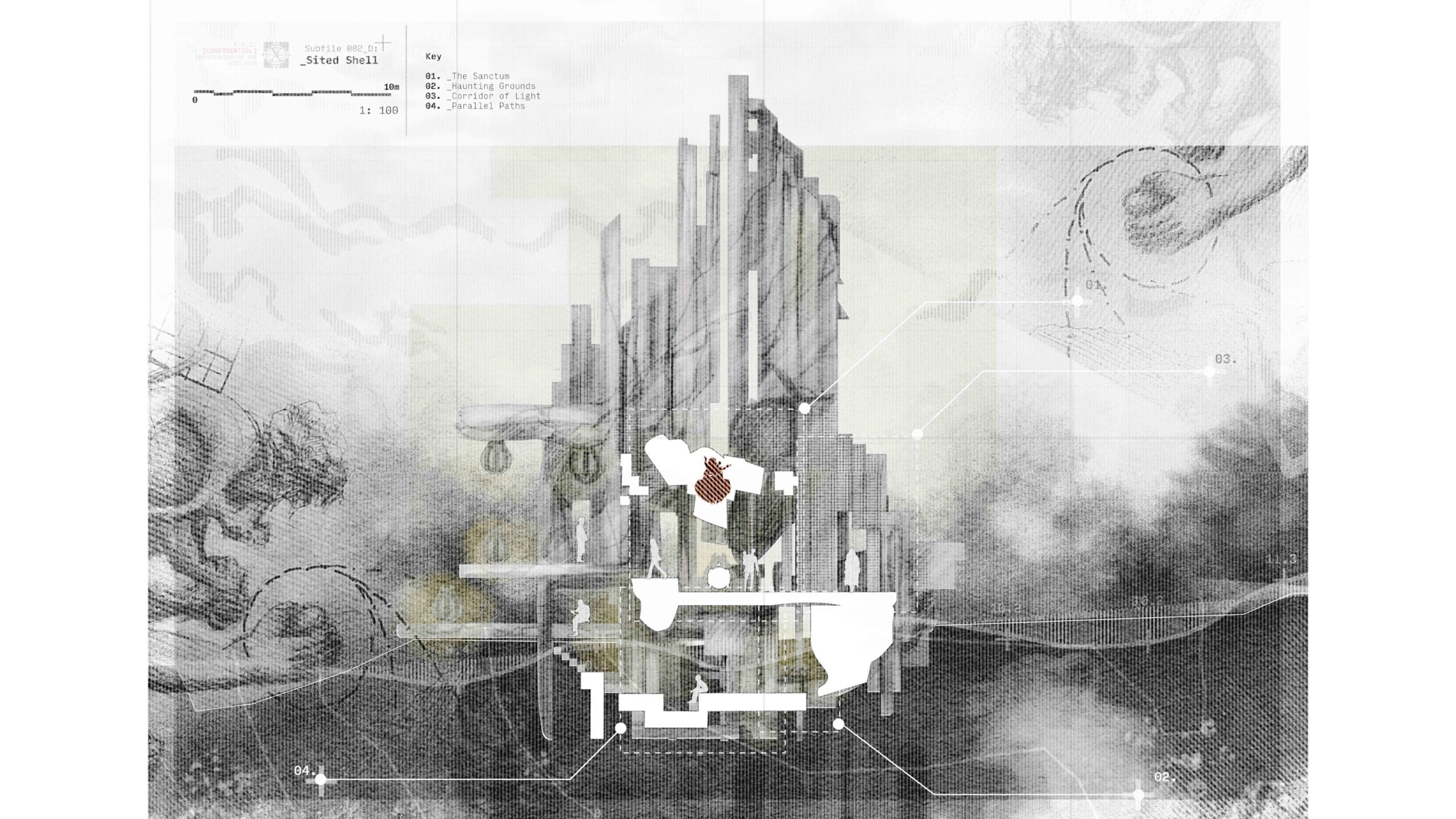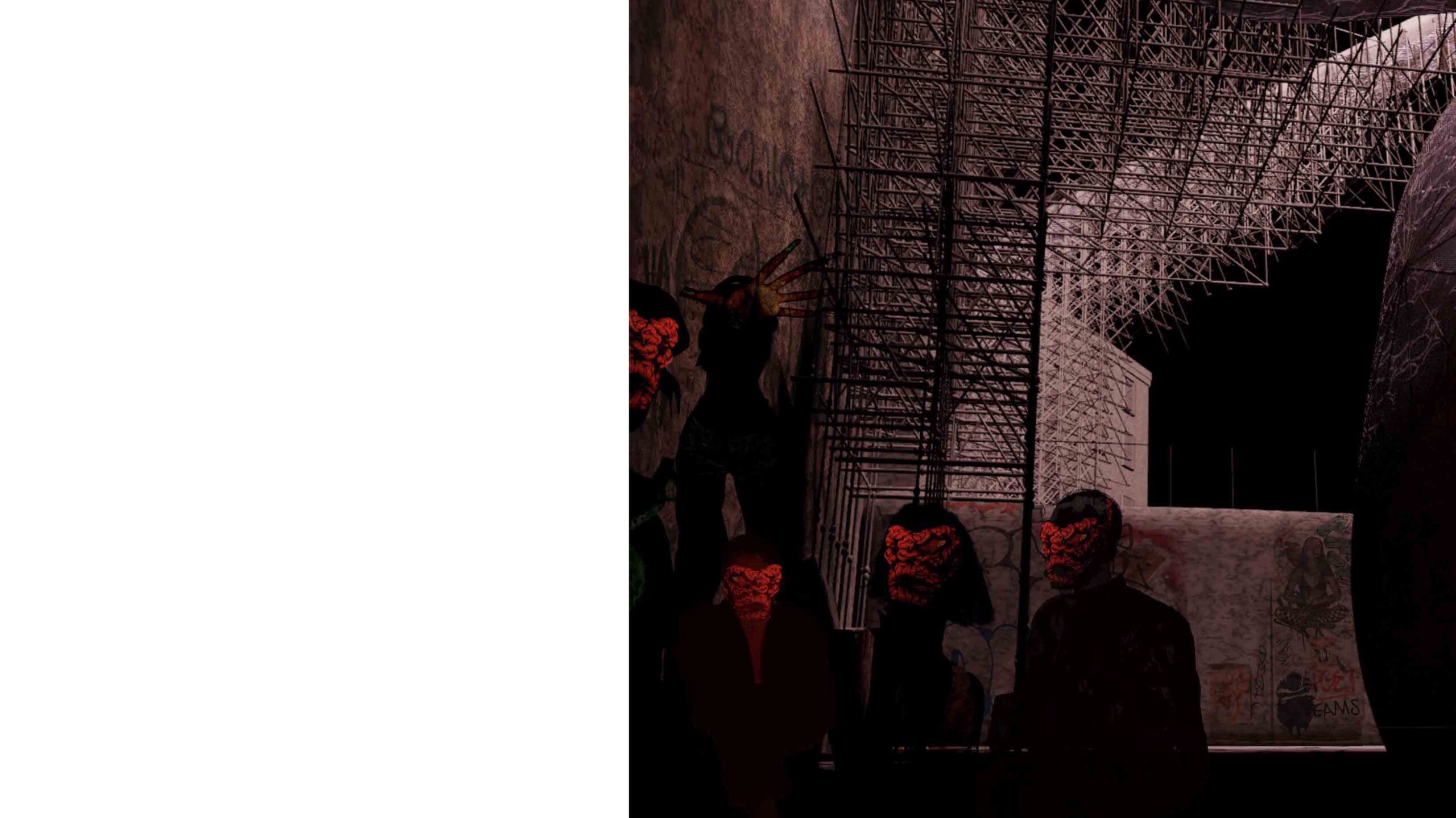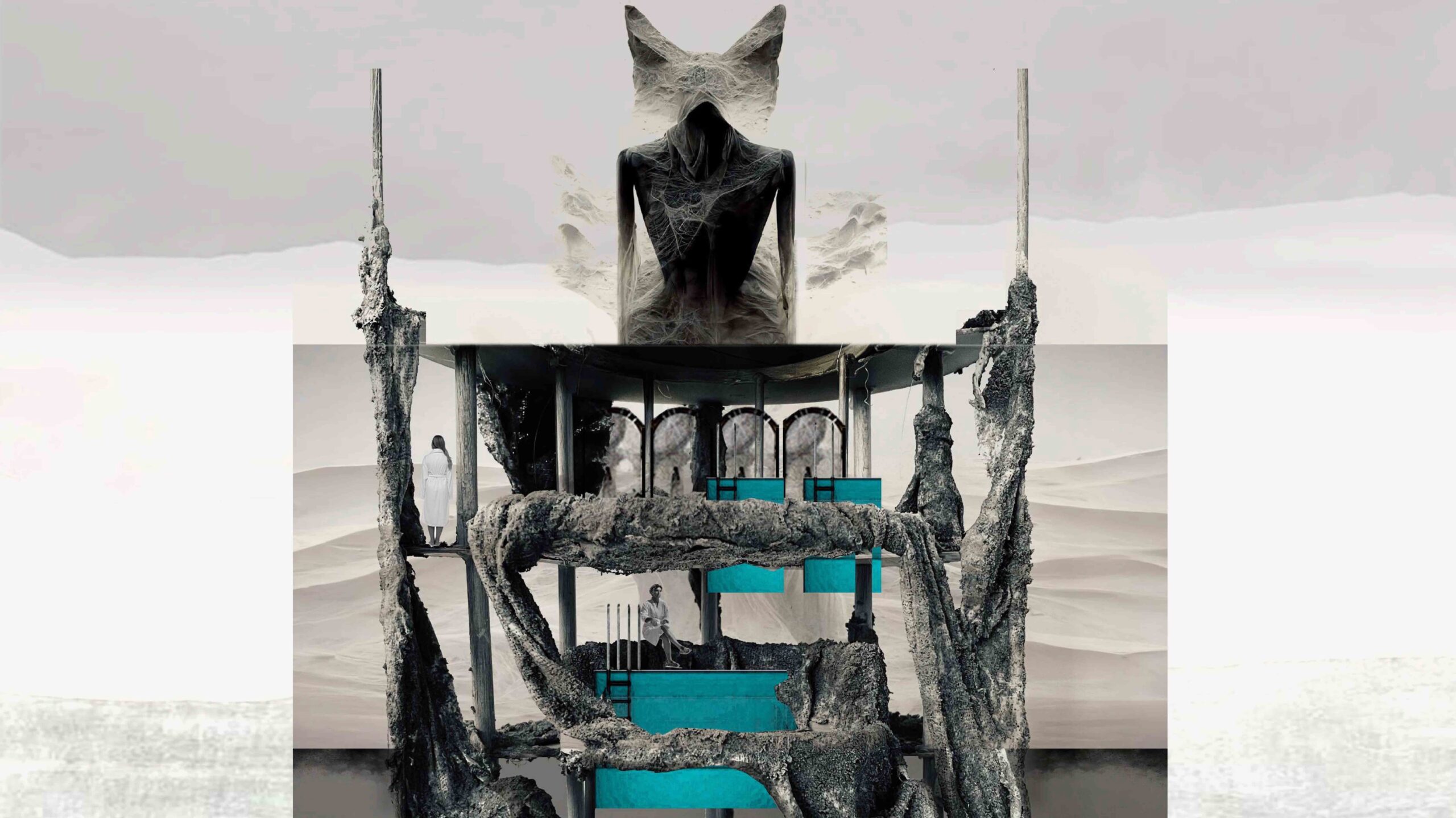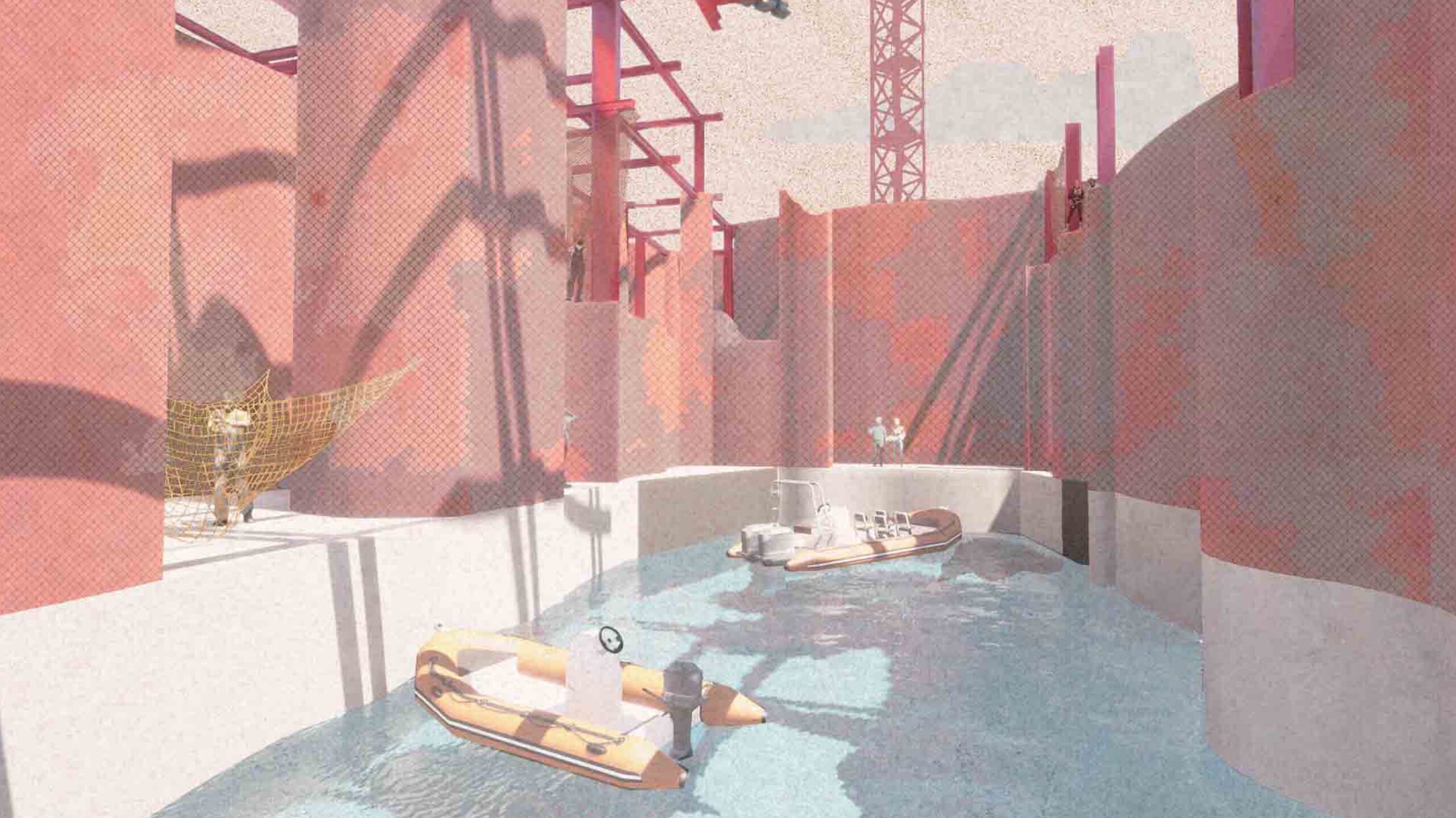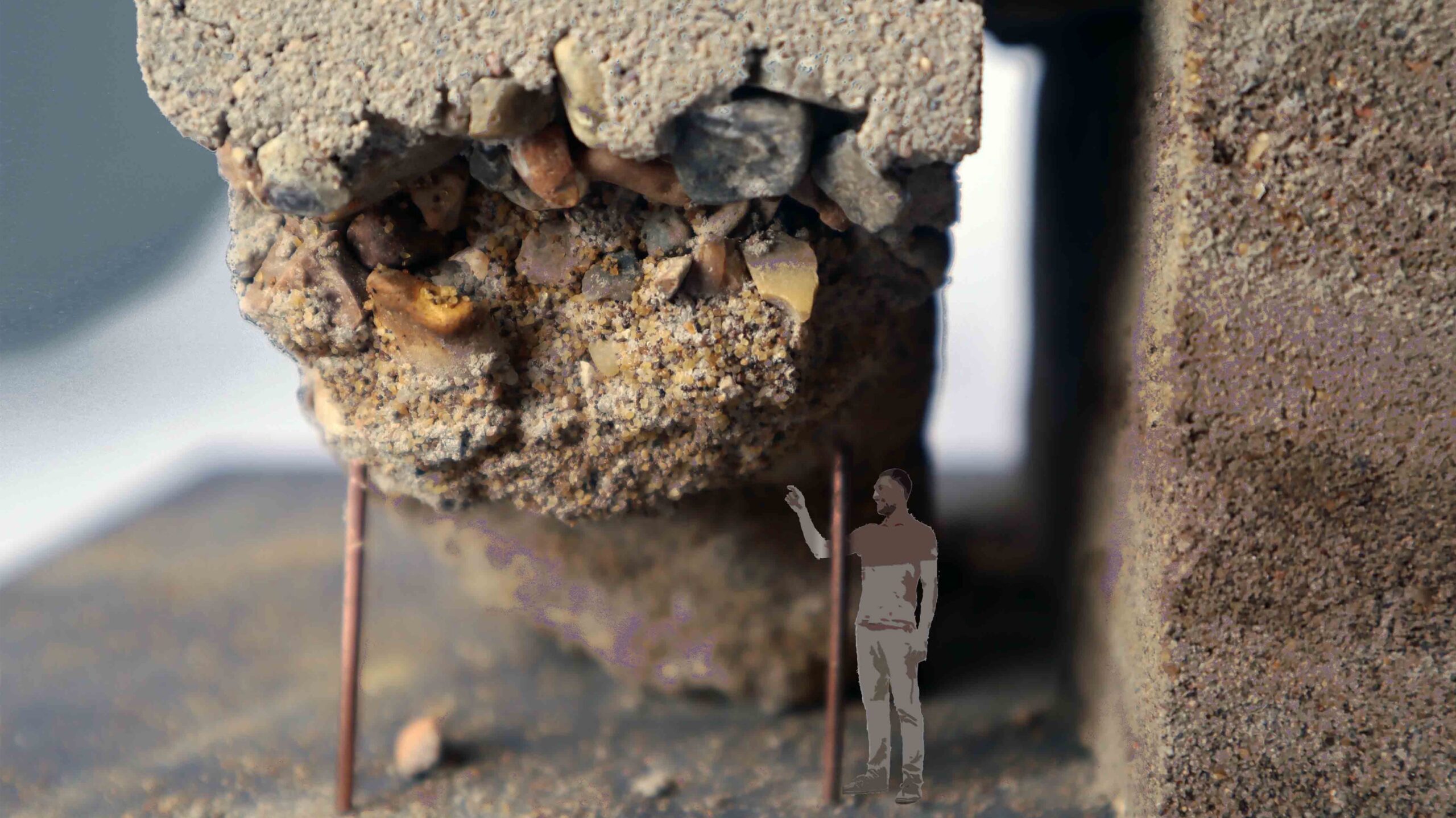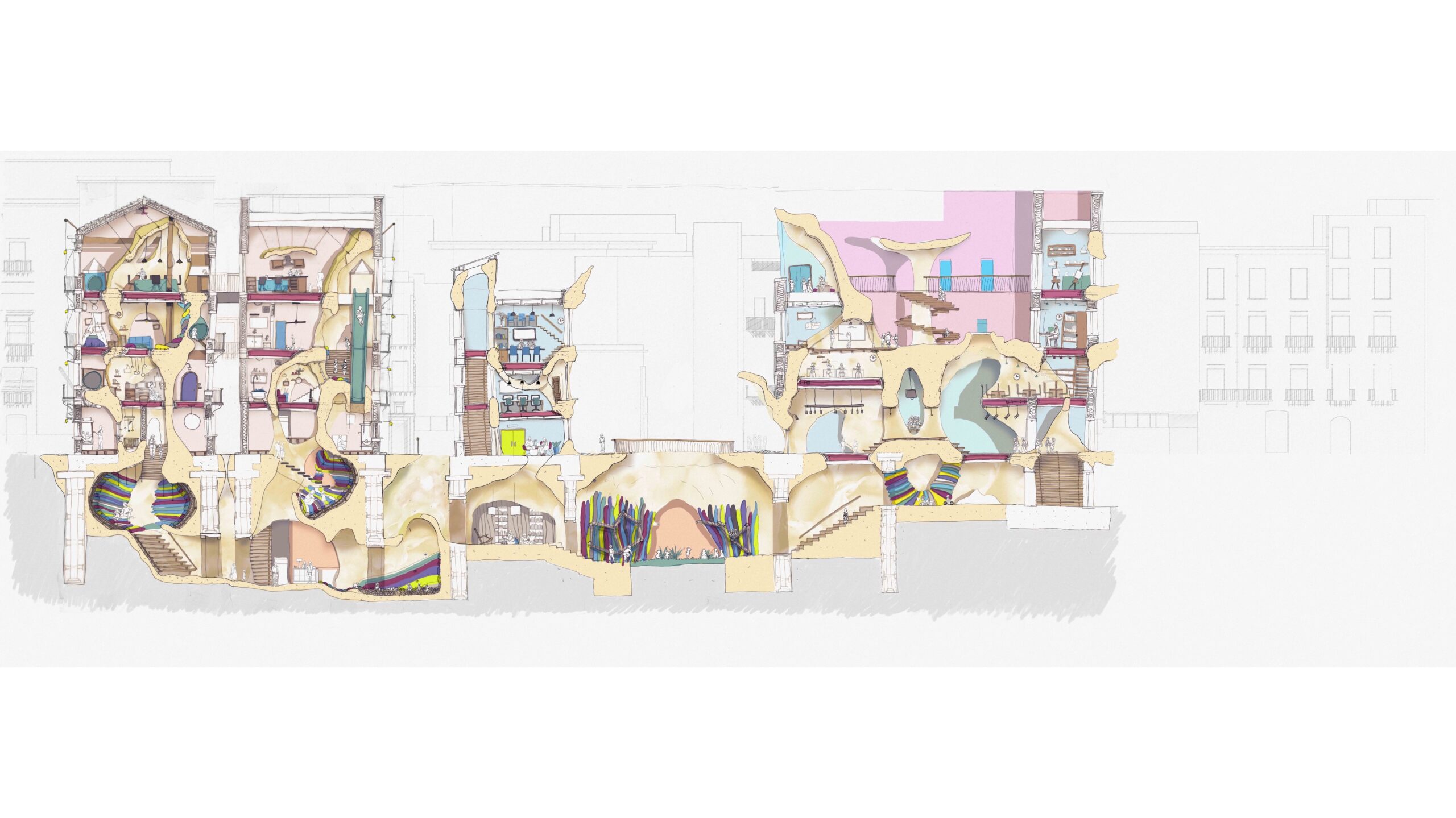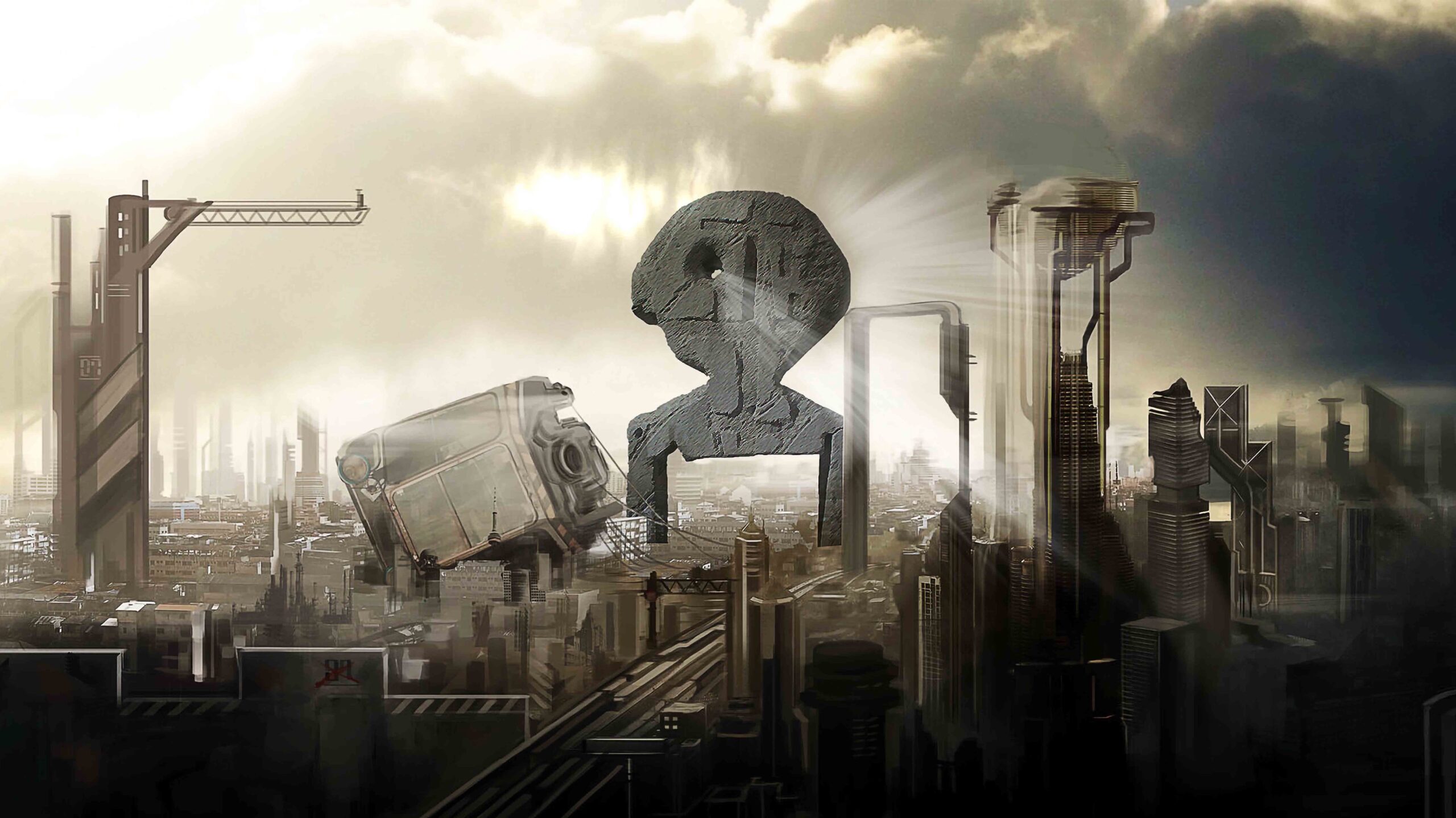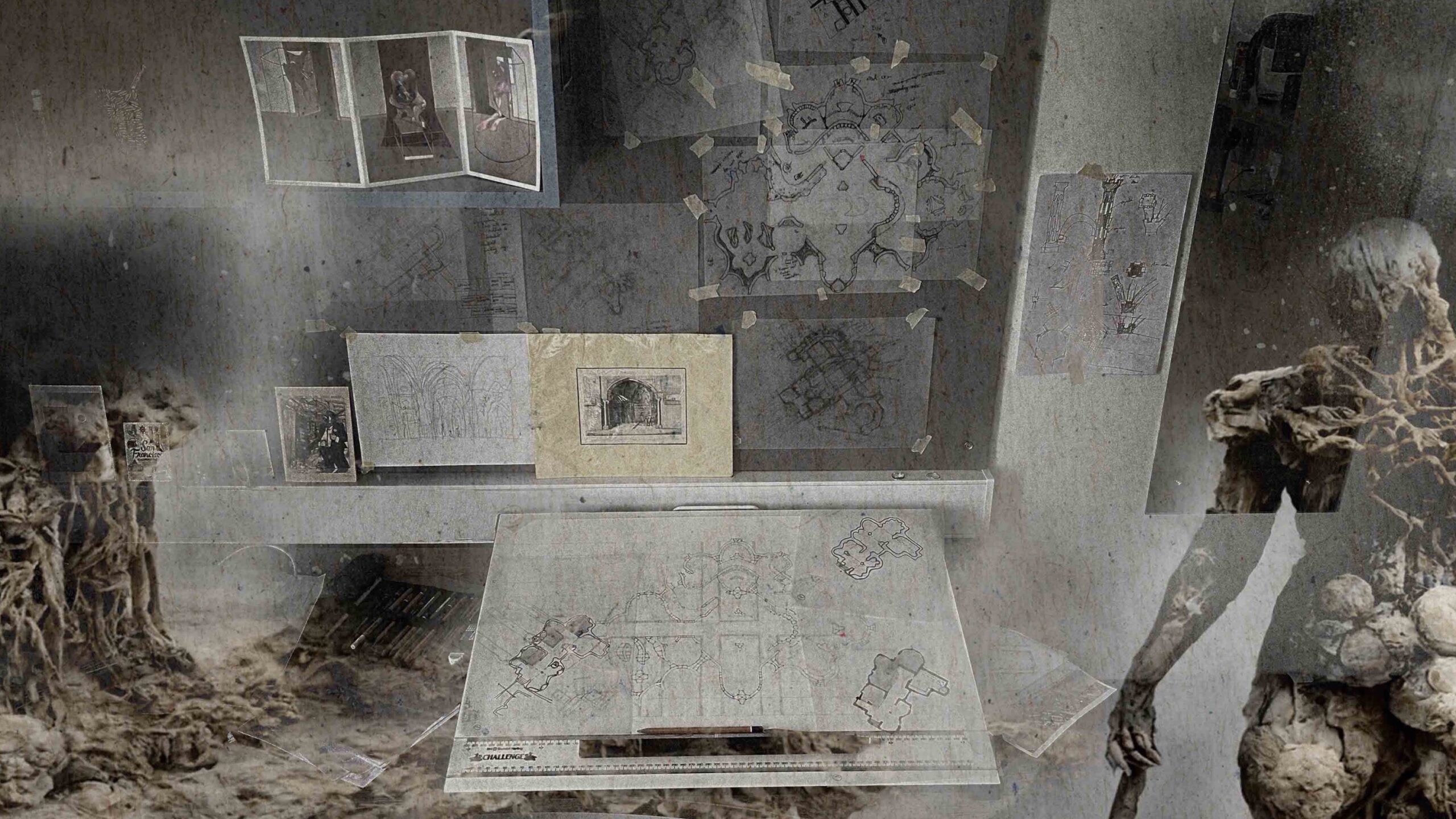Design Studio 25 ARCHIVE
Tutors: Alessandro Ayuso and Mary Konstantopoulou
Alessandro Ayuso is a designer, author and teacher. His studio-based practice focuses on the intersection of representation, architecture and the alien body. His research is the subject of his book, Experiments with Body Agent Architecture, published by UCL Press.
Mary Konstantopoulou is an architectural designer and illustrator. Her work explores the theme of humans’ relationships with environments and culture, and invites a questioning of architecture’s role in sustainability and myth-making. She currently works with Jan Kattein Architects on community engagement and meanwhile projects.
Spectral Futures
This year, DS25 confronted looming global environmental and social problems through the invention of particular architectural scenarios presenting alternative futures. We started the year by designing spectres we called Future Ghosts. These pan-temporal protagonists haunted the past, present and future, helping to provide situated points of view and provoking ideas about speculative narratives and architectural concepts.
We visited Sicily, where we explored Palermo’s Danisinni neighbourhood, the ghost town Poggioreale Antica, the newly created towns of Poggioreale Nuova and Gibellina Nuova, and Alberto Burri’s Cretto Memorial, looking through the eyes of our Future Ghosts for clues about future possibilities in the traces and visions of the past. Through drawings, storyboards, and materially-based models, we imagined how our Future Ghosts would haunt Palermo, and designed Shells-of-the-Ghosts, architectural fragments on chosen sites, as first forays into mediating the scale of the body and city.
In the second Semester, we expanded our initial ideas and the architectural seeds of the Shells-of-the-Ghosts. The results were adventurous architectural proposals situated in narratives of Palermo’s possible futures. For instance, Filippo’s project follows ‘the Mutant Baddie’, a Future Ghost constructing their identity through augmented reality technology, proposing a parasitical augmentation of abandoned buildings that would give a presence and place for the local queer community. Soraia’s project was told from the point of view of a clay ghost that navigates modernist and vernacular architecture, seeking to preserve cultural heritage; considering the proposed building as a continuous piece of the city fabric, the project proposes an accessible ceramics workshop where African and Palermian vernacular building methods could be researched and taught under a ceramic-clad canopy. Alcina’s allegorical project imagined genetically-modified human protagonists tasked with cleaning pollutants from Palermo’s surfaces; in the far-future these ‘Scalams’ curate a museum of human evolution, encouraging non-genetically-modified visitors to navigate nets and tensile membranes to experience exhibitions provoking a reconsideration of the presumed social hierarchy.










